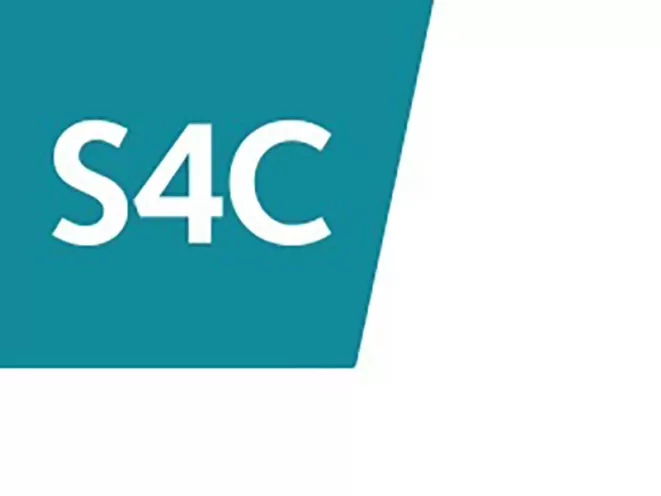Cyfres ddrama yn dilyn hanes cwmni lorïau GMJ. Oherwydd rhesymau hawlfraint bydd angen cyfrif Coleg Cymraeg i wylio rhaglenni Archif S4C. Mae modd ymaelodi ar wefan y Coleg Cymraeg Cenedlaethol i gael cyfrif.
3 Lle - Ifan Huw Dafydd (2010)
Yr actor Ifan Huw Dafydd, sydd yn ein tywys i dri lle sydd wedi bod yn bwysig yn ei fywyd. Y cyntaf yw bwthyn ei fam-gu a'i dad-cu, Tŷ Poeth ger Llandysul; yr ail le yw Clwyd Theatr Cymru a'r trydydd dewis yw ardal Coedwig Mametz yn Ffrainc, lleoliad brwydr fawr yn y Rhyfel Byd Cyntaf. Apollo, 2010. Oherwydd rhesymau hawlfraint bydd angen cyfrif Coleg Cymraeg i wylio rhaglenni Archif S4C. Mae modd ymaelodi ar wefan y Coleg Cymraeg Cenedlaethol i gael cyfrif.
Amdani (Cyfres 1)
Cawn fwynhau cwmni Llinos (Ffion Dafis) a gweddill y tîm rygbi merched mewn tref fechan yng Ngogledd Cymru. Oherwydd rhesymau hawlfraint bydd angen cyfrif Coleg Cymraeg i wylio rhaglenni Archif S4C. Mae modd ymaelodi ar wefan y Coleg Cymraeg Cenedlaethol i gael cyfrif.
#Fi: Ben a Hollie (2013)
Cyfres ddogfen i bobl ifanc. Mae Ben yn 'sgrifennu blog ar ei wefan er mwyn rhannu ei brofiad o fod â chwaer awtistig. Mae her fawr yn ei wynebu fe a'i chwaer wrth iddyn nhw helpu i drefnu cyngerdd arbennig i godi arian tuag at awtistiaeth. Boom Cymru, 2013. Oherwydd rhesymau hawlfraint bydd angen cyfrif Coleg Cymraeg i wylio rhaglenni Archif S4C. Mae modd ymaelodi ar wefan y Coleg Cymraeg Cenedlaethol i gael cyfrif.
Esboniadur Drama Radio
Gwybodaeth drylwyr am dair drama allweddol: Siwan gan Saunders Lewis Tair gan Meic Povey Tŷ ar y Tywod gan Gwenlyn Parry
'The sound of fighting in our ears': Presenting the Great War in Welsh
The Great War was one of the most important events in Welsh history, the ramifications of which have seriously affected the society and culture of the country for decades. However, the history of the years of fighting has often been presented to a Welsh-speaking audience in an oversimplified way, emphasising the horrors of the War without considering the context. This study briefly traces how the way the War has been presented in Welsh-language programmes over the decades, before considering in detail some of the problems arising from that presentation of the slaughter.
'Ar wasgar hyd y fro': An experiment in inter-disciplinary reading
During the summer of 2010, as part of a project by Dr T. Robin Chapman and Dr Dafydd Sills-Jones, Welsh speakers of all generations and backgrounds were questioned about the poems of T. H. Parry-Williams, at the National Library and on the Eisteddfod field. The format was that of asking everyone to select a poem, to read it aloud, and then to explain why they had chosen it in an open-ended interview. The aim was to investigate the current status of the poetry of T.H. Parry-Williams, by analysing different readings on the basis of rhetoric and performance. Although no effort was made to secure a scientifically representative sample, both male and female readers were attracted, from different parts of Wales, and of all ages from early twenties to retirement age. It was expected that the project would raise questions about the reception given to the poems of T. H. Parry-Williams amongst the members of the public who took part in the experiment. Who would choose which poem? How would different performances of the same poem reveal geographical or generational differences? What would be the relationship between the performances and the reasons and stories that appeared during the interviews? There were also methodological questions to be resolved across an interdisciplinary gulf. How would audiovisual and literary techniques inter-relate? How would it be possible to analyse the readings, without following the usual interpretative trails? An exhibition of the interviews was staged in December of the same year in the form of a series of video screens showing the interviews in parallel and concurrent format. Although the project belongs to two similar analytical traditions, namely literary analysis and the analysis of film, the exhibition brought them together through a third tradition, exemplified in video artworks such as the audiovisual installations ‘Forty Part Motet’ and ‘Videos Transamericas’. Thus, this demonstrative/analytical mode posed a challenge to both researchers, and was an inventive journey into a new methodological domain. Although the researchers are agreed on the fundamental research question posed by the project, which is to seek to assess the position occupied by T.H. in Welsh culture thirty five years after his death, it became apparent during their collaboration that this was on the basis of markedly different ideas of the significance of the methods used and the findings obtained. Robin Chapman’s background is in recent Welsh literature. Dafydd Sills-Jones has experience of working in the field of documentary production, and is interested in the performing aspects of such productions. What follows is an epilogue where both use the project’s common ground to explain their methods to each other – and to themselves. The hope is that it will be a means not only for them to say something about our two disciplines, but that it will be an opportunity also to investigate in more general terms the (creative) tension that manifests itself in interdisciplinary collaboration.
Penwythnos Cyfarwyddo Theatr 2013 a 2014
Cyfweliadau gyda chyfarwyddwyr theatr blaenllaw a ffilmiwyd yn ystod Penwythnos Cyfarwyddo Theatr 2013 a 2014. Dyma brosiect cydweithredol a drefnir gan Brifysgol De Cymru.








